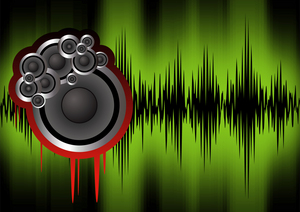Disclaimer: The terms corporal punishment and spanking refer to the use of spanking a child’s rear end on the occasion of a child’s misbehavior. These terms are not to be confused with domestic violence and abuse where the child ends up with severe bruising, broken limbs, or possibly death. Domestic violence and child abuse are wrong and should be reported if witnessed. This article is an opinion article, it is not a scientific study or research report, it is the author’s opinion and should be viewed as such.
The debate of whether corporal punishment is abuse or not is one of the most controversial issues surrounding families today. Some families settle for the time-out and verbal corrections only approach while others believe that firm punishment, including spanking, is a justifiable way to punish their children’s wrong doings. However, what way is the right way is not the point of this article. It is the goal of this article to determine whether corporal punishment is an effective means of communication and effective as a punishment.
One of my firm beliefs about spanking is that if you are going to do it, do not use an object, such as a paddle, spoon, etc, to do it with. This, in my opinion, constitutes the abuse described in the disclaimer. The spanking that is discussed in this article is “hand spanking” and is not a hard beating, just a slap on the rear end just hard enough that the child instantly knows what they did is wrong.
The National Mental Health Association states that “occasional, gentle spankings are not likely to cause children lasting damage” in their Effective Discipline Techniques for Parents flyer. However, they go on to say that “intense, repetitive spankings can lead to mental anguish in children, damage their self-esteem, increase their risk for depression, and leave them feeling bitter, resentful or angry.” It is important to note here that the National Mental Health Association (NMHA) does not advocate any kind of spanking and the flyer is actually a tool they use to give parents alternative methods to disciplining their children instead of spanking.
The intense, repetitive spankings may be effective in communicating to your child that what they are doing is wrong, however, it is not a lasting approach. This teaches children that it is okay to be violent and these types of spankings, depending on jurisdiction, may be considered abuse. They can also lead to permanent physical, emotional, and mental damage, which should definitely not be the parent’s intent when disciplining their child.
The American Academy of Pediatrics (AAP) state that they strongly oppose spanking. However, if a spanking is spontaneous (your child does something extremely dangerous, and in the heat of the moment, you prevent the disaster and slap their bottom), the parent should explain to the child why they received the bottom-slapping, the behavior that caused the spanking, and how angry (or scared) the child’s behavior made them feel. It may also be appropriate in these cases to tell the child how much you love them and that you would never purposely do anything to hurt them. These things may help the child understand why they received the spanking and may prevent the behavior from occurring.
The statement by the AAP basically says that they strongly oppose spanking, however, in the right scenarios, it may be an effective form of communicating to the child not to do a specific behavior again. The only way that it can be effective here is if the spanking was spontaneous and doesn’t occur all of the time (only in scenarios as described above) and the parent explains themselves afterwards and tells the child how much they love them.
It is not up to me to decide how to punish your child, and I am not attempting to do that. I just wanted to inform you of the effects of spanking, the various health organizations’ position on the subject (basically, do not do it, but occasional, gentle spankings in the heat of the moment will not permanently damage your child), and what spanking is and what spanking is not. In review, spanking is not the repetitive, harsh beating of a child, it is not child abuse (at least, not yet) or using a paddle or other object to beat a child with. In certain occasions, spanking can be an effective means of communicating that a certain behavior is inappropriate, however, most of the time, it may be better to settle for an age appropriate time-out.
Sources:
http://www.mhatexas.org/10._%20Effective_Discipline_Techniques_for_Parents_Alternative_to_Spanking.pdf
http://www.nospank.net/aap4.htm


